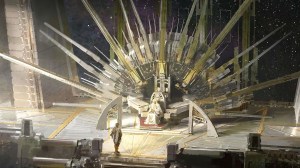Somewhere out in the furthest corners of the universe, the Hubble Telescope has spotted an increasingly uncommon “double quasar.” NASA — in conjunction with the European Space Agency (ESA) — released the findings earlier this month, being sure to include actual photographs captured by the Hubble Telescope.
Videos by ComicBook.com
According to a release from NASA, the double quasar was spotted in two ancient galaxies that are in the process of merging. The findings were initially published in the Nature Astronomy journal, using findings from the NASA/ESA technology.

“We estimate that in the distant universe, for every 1,000 quasars, there is one double quasar. So finding these double quasars is like finding a needle in a haystack,” lead researcher Yue Shen said in the study. She is based at the University of Illinois at Urbana-Champaign.
Shen and other researchers hope to use the data in further studies involving collisions between galaxies and the merging of supermassive black holes.
The study says the astronomers were drawn to the project due to the role of quasars in the formation of galaxies. As researchers detail in the publication, the existence of quasars suggests an elliptical galaxy will form due to spreading radiation and “galactic radiation” coming from the quasars at the center of the universe.
“This truly is the first sample of dual quasars at the peak epoch of galaxy formation with which we can use to probe ideas about how supermassive black holes come together to eventually form a binary,” Johns Hopkins University researcher Nadia Zakamska says in the study.
“Quasars make a profound impact on galaxy formation in the universe,” Zakamska adds. “Finding dual quasars at this early epoch is important because we can now test our long-standing ideas of how black holes and their host galaxies evolve together.”
Using updated technology — such as the James Webb Space Telescope that launches later this year — researchers hope to use the data and further research to better understand how the formation of galaxies outside of our own.








